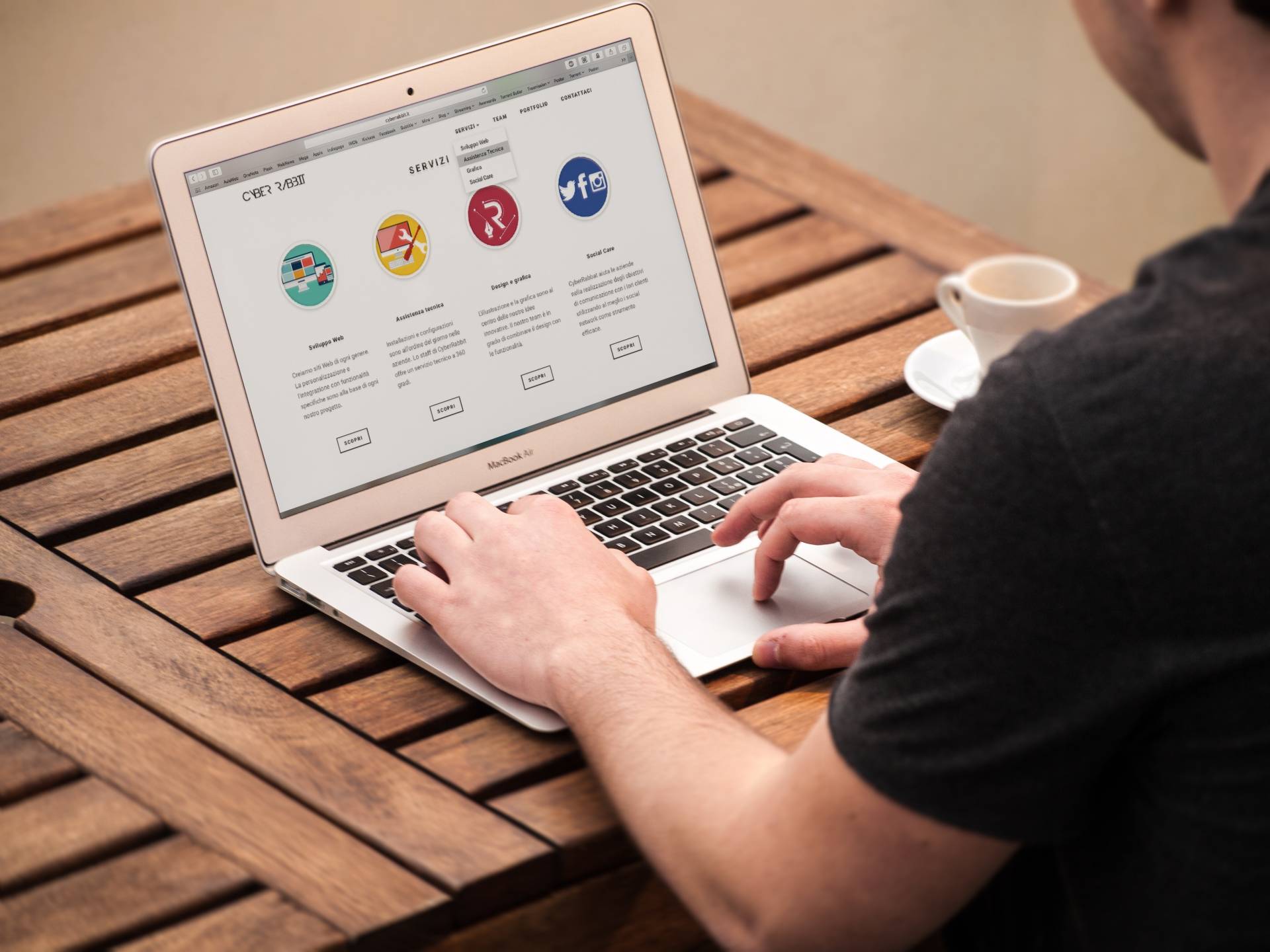In today’s digitally driven world, where everyone is looking for instantaneity, what’s the most important user experience/user interface (UX/UI) aspect a company’s website should succeed at in order to engage visitors?
These answers are provided by Young Entrepreneur Council (YEC), an invite-only organization comprised of the world’s most promising young entrepreneurs. YEC has also launched BusinessCollective, a free virtual mentorship program that helps millions of entrepreneurs start and grow businesses.
1. Accessibility
 If your website provides a good experience for people with visual impairments and other disabilities, it will almost certainly provide a good experience for everyone else. A focus on accessible navigation, typography, color choices and screen-reader compatibility, will help you create a website that is intuitive and pleasant to use for everyone. – Vik Patel, Future Hosting
If your website provides a good experience for people with visual impairments and other disabilities, it will almost certainly provide a good experience for everyone else. A focus on accessible navigation, typography, color choices and screen-reader compatibility, will help you create a website that is intuitive and pleasant to use for everyone. – Vik Patel, Future Hosting
2. A Clear, Guided Experience
 Effective user experience needs to evoke a feeling; it needs to guide the user; it needs to communicate. UX/UI have become synonymous because brands need to move, communicate and adapt to the user at all times. Being able to understand what part of the customer journey they’re in and where they need to be guided will yield the best results. – Michael Cleary, Huemor
Effective user experience needs to evoke a feeling; it needs to guide the user; it needs to communicate. UX/UI have become synonymous because brands need to move, communicate and adapt to the user at all times. Being able to understand what part of the customer journey they’re in and where they need to be guided will yield the best results. – Michael Cleary, Huemor
3. Fast Site Performance
 Even the best designed and most visually appealing website will fail to engage visitors if it is slow. It should load fast, be responsive to input in fractions of a second, and not leave visitors twiddling their thumbs. With modern web technologies, there is no reason for even a complex site to be slow and unresponsive. – Justin Blanchard, ServerMania Inc.
Even the best designed and most visually appealing website will fail to engage visitors if it is slow. It should load fast, be responsive to input in fractions of a second, and not leave visitors twiddling their thumbs. With modern web technologies, there is no reason for even a complex site to be slow and unresponsive. – Justin Blanchard, ServerMania Inc.
4. Infinite Scrolling
 Many websites have adopted this design strategy to great success by putting their own clever twist on it. Something that not everyone realizes with modern web pages is that you essentially have an unlimited amount of vertical space to work with. Using bucket brigades, interactive elements and other engagement strategies, you can keep your viewers scrolling or swiping down as far as you like. – Bryce Welker, CPA Exam Guy
Many websites have adopted this design strategy to great success by putting their own clever twist on it. Something that not everyone realizes with modern web pages is that you essentially have an unlimited amount of vertical space to work with. Using bucket brigades, interactive elements and other engagement strategies, you can keep your viewers scrolling or swiping down as far as you like. – Bryce Welker, CPA Exam Guy
5. Easy Navigation to Your Most Important Pages
 Most websites have one or two main places that the majority of users are driven towards. That space could be the login or it could be the pricing information. Either way, focus on getting people to those places with the least amount of friction possible. – Nicole Munoz, Start Ranking Now
Most websites have one or two main places that the majority of users are driven towards. That space could be the login or it could be the pricing information. Either way, focus on getting people to those places with the least amount of friction possible. – Nicole Munoz, Start Ranking Now
6. Good SEO
 SEO is an overlooked aspect when it comes to UX, but it is the most effective way to engage visitors. While SEO isn’t what visitors engage with on your website, it is something that helps you match your visitor’s search intent to your website pages. A successful SEO strategy allows you to direct visitors to the relevant pages they wanted. By doing this, your visitors engage more. – Alexander Mistakidis, Gamelynx
SEO is an overlooked aspect when it comes to UX, but it is the most effective way to engage visitors. While SEO isn’t what visitors engage with on your website, it is something that helps you match your visitor’s search intent to your website pages. A successful SEO strategy allows you to direct visitors to the relevant pages they wanted. By doing this, your visitors engage more. – Alexander Mistakidis, Gamelynx
7. An Immediate Understanding of Your Value Proposition
 If I go to your page, within five seconds I should know exactly what you offer and why I should be here. If not, I’m going somewhere else. Immediately show your value and give visitors a reason to be engaged and interested. Think well-made explainer videos, visually entertaining GIFs or even good old-fashioned bold words. Intrusive popups can have the opposite effect. – Troy Osinoff, JUICE
If I go to your page, within five seconds I should know exactly what you offer and why I should be here. If not, I’m going somewhere else. Immediately show your value and give visitors a reason to be engaged and interested. Think well-made explainer videos, visually entertaining GIFs or even good old-fashioned bold words. Intrusive popups can have the opposite effect. – Troy Osinoff, JUICE
8. A Clean and Simple Design
 Less is more these days when it comes to UX/UI on websites. The smallest details usually make the biggest differences. In a world of instant gratification, people respond well to information that is familiar. A clean, simple, intuitive design is more likely to resonate with the audience of today. Adding something subtle, visually appealing and novel can also charm the toughest critics. – Steven Fleisher, Two Degrees
Less is more these days when it comes to UX/UI on websites. The smallest details usually make the biggest differences. In a world of instant gratification, people respond well to information that is familiar. A clean, simple, intuitive design is more likely to resonate with the audience of today. Adding something subtle, visually appealing and novel can also charm the toughest critics. – Steven Fleisher, Two Degrees
9. A Pop-Up Chat Box
 A pop-up chat box floating on the page that allows customers to chat with you or call a customer service representative is a must. This gives them the instant satisfaction of resolving their problem in real time, which is somewhat expected by customers these days. – Andy Karuza, FenSens
A pop-up chat box floating on the page that allows customers to chat with you or call a customer service representative is a must. This gives them the instant satisfaction of resolving their problem in real time, which is somewhat expected by customers these days. – Andy Karuza, FenSens
10. A Great FAQ Page
 This is UX/UI in its best form: self-serve, straightforward and expected. Make it easy for your website visitors to get their questions answered immediately without having to send an email or talk to a chatbot. Spend a little extra time testing and developing your FAQ page instead of treating it as a throwaway page and make sure it’s helpful, comprehensive and clear. – Roger Lee, Human Interest
This is UX/UI in its best form: self-serve, straightforward and expected. Make it easy for your website visitors to get their questions answered immediately without having to send an email or talk to a chatbot. Spend a little extra time testing and developing your FAQ page instead of treating it as a throwaway page and make sure it’s helpful, comprehensive and clear. – Roger Lee, Human Interest
11. Intuitive, Responsive Design
 Companies must determine what device visitors are using and be able to deliver the website that works on that screen quickly so that the user can see everything they want rather than having to struggle. – Serenity Gibbons, Calendar
Companies must determine what device visitors are using and be able to deliver the website that works on that screen quickly so that the user can see everything they want rather than having to struggle. – Serenity Gibbons, Calendar
12. A Call to Action
 Many websites miss this key element: a call to action. In today’s world where the average user has an attention span of less than five seconds, it’s important to tell users what to do when they are on your site. This is especially true if you plan on acquiring leads or actual business from your site. Displaying powerful calls to action on your site is the best way to engage your users. – Michael Hsu, DeepSky
Many websites miss this key element: a call to action. In today’s world where the average user has an attention span of less than five seconds, it’s important to tell users what to do when they are on your site. This is especially true if you plan on acquiring leads or actual business from your site. Displaying powerful calls to action on your site is the best way to engage your users. – Michael Hsu, DeepSky
13. Video Content
 A picture is worth a thousand words. Furthermore, video is worth a thousand pictures. Hi-res photos are able to convey an idea much faster than words. String 30 pictures together every second, accompanied with immersive sound, and you’re on the fast track of information transfer. Put a video library in your website’s menu and add video wherever it’s relevant. Your message will be loud and clear. – Christopher Tedder, Clinger Holsters
A picture is worth a thousand words. Furthermore, video is worth a thousand pictures. Hi-res photos are able to convey an idea much faster than words. String 30 pictures together every second, accompanied with immersive sound, and you’re on the fast track of information transfer. Put a video library in your website’s menu and add video wherever it’s relevant. Your message will be loud and clear. – Christopher Tedder, Clinger Holsters

